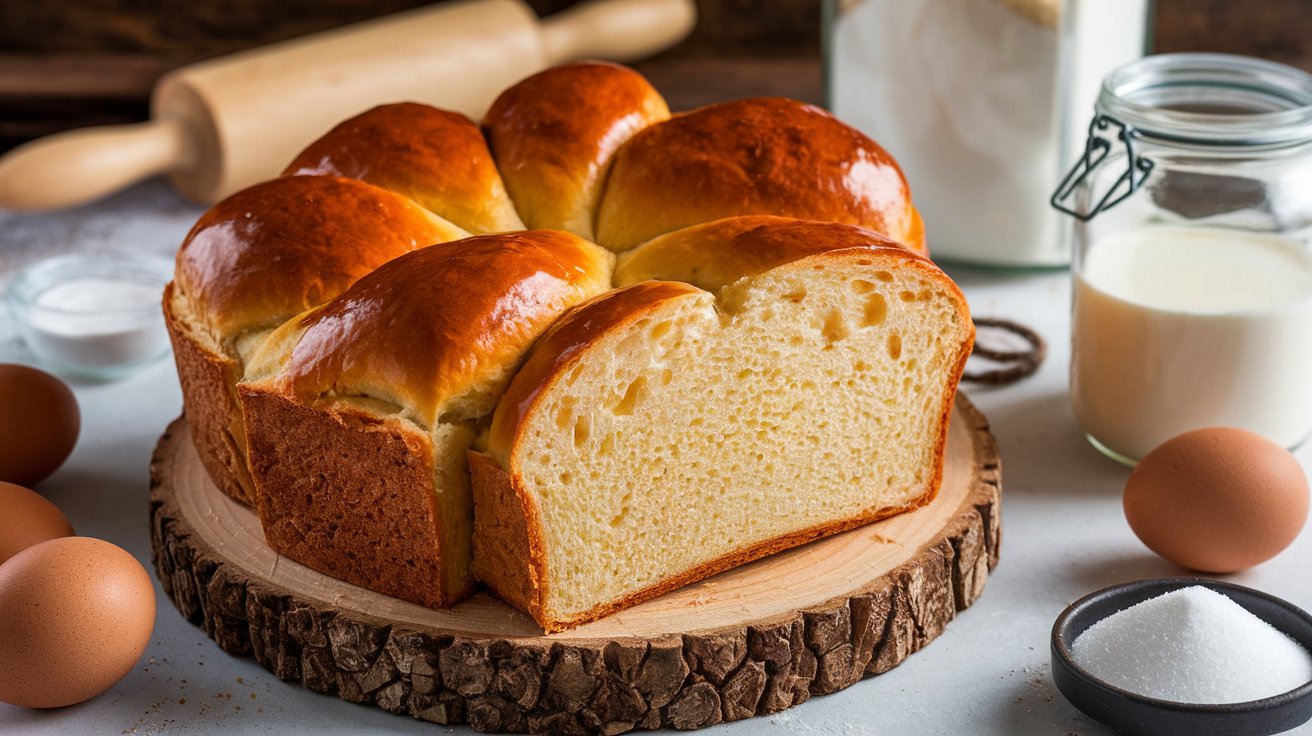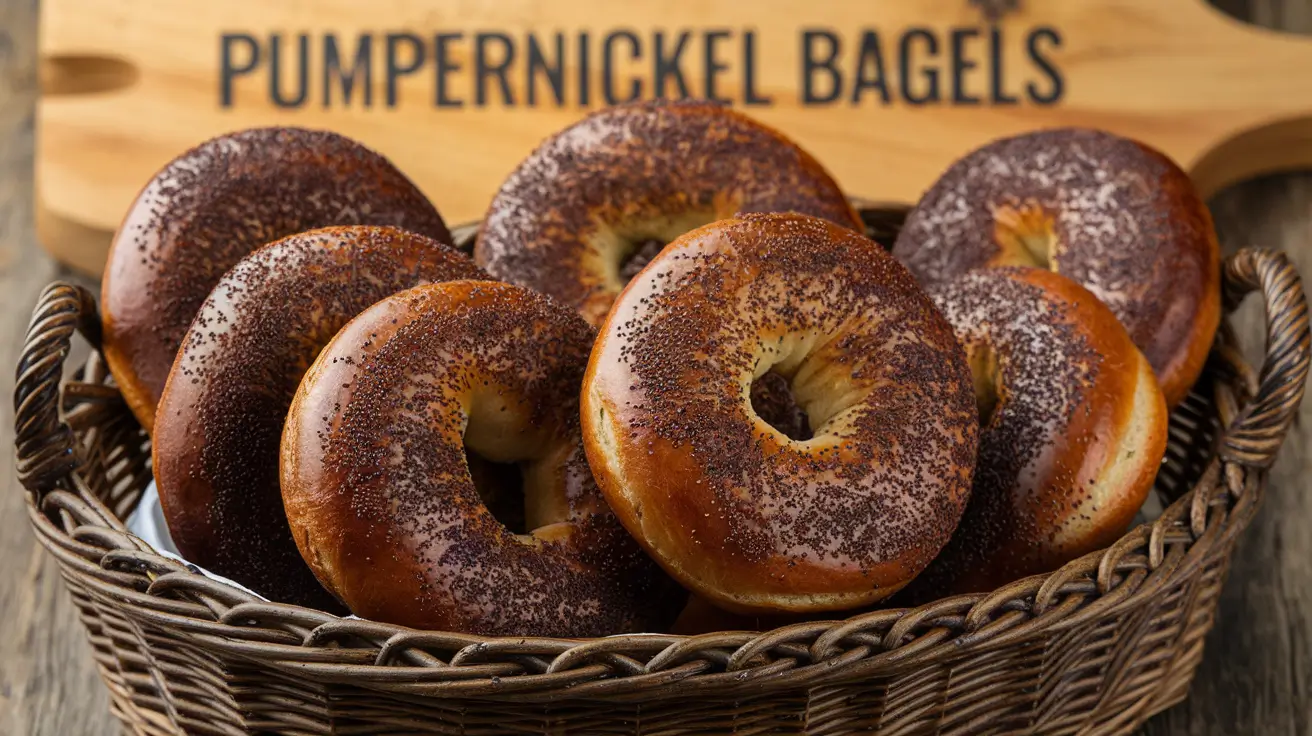Mastering Portuguese Sweet Bread : A Traditional Recipe with Modern Twists

Portuguese Sweet Bread, also known as Pão Doce, is a traditional bread from Portugal that has captured the hearts (and taste buds) of food lovers around the world. Whether you’re a busy parent looking for a delicious, homemade bread recipe or a culinary enthusiast seeking to perfect your baking skills, this comprehensive guide is for you. We’ll dive deep into the world of Portuguese Sweet Bread, exploring its history, sharing a classic recipe, and providing expert tips to ensure your bread is nothing short of spectacular.
Table of Contents
- The Tasty History of Portuguese Sweet Bread
- Understanding Portuguese Sweet Bread: Ingredients and Quality
- Essential Ingredients for Perfect Portuguese Sweet Bread
- Classic Portuguese Sweet Bread Recipe
- Cooking Methods: From Oven to Stovetop
- Flavor Variations to Spice Up Your Bread
- Homemade Butter and Spreads to Elevate Your Bread
- Healthier Alternatives: Whole Wheat and Gluten-Free Options
- Meal Prep and Storage Tips
- Pairing and Serving Suggestions
- Nutritional Information and Dietary Considerations
- Troubleshooting Common Portuguese Sweet Bread Issues
- Frequently Asked Questions
- Conclusion: Mastering the Art of Portuguese Sweet Bread
1. The Tasty History of Portuguese Sweet Bread
Portuguese Sweet Bread, also known as Pão Doce, has a rich history that dates back to the 16th century. This traditional bread originated in Portugal and is known for its sweet, soft, and fluffy texture.
Origins and Evolution
The concept of sweet bread has been around for centuries, with various forms of sweet bread appearing in different cultures. However, Portuguese Sweet Bread as we know it today is believed to have originated in the 16th century in Portugal.
The exact origin is debated, but many credit the Portuguese nuns with creating the first recipes for Pão Doce. The story goes that the nuns would bake sweet bread as an offering to the poor.
Rise to Popularity
Portuguese Sweet Bread quickly gained popularity for several reasons:
- Convenience: It was easy to make and could be baked in large quantities.
- Kid-Friendly: The simple flavor and texture appealed to children, making it a go-to option for family meals.
- Versatility: Pão Doce could be easily flavored and paired with various toppings.
By the 19th century, Portuguese Sweet Bread had become a staple in Portuguese cuisine. It was often served at family gatherings and celebrations.
Global Spread
As Portuguese immigrants traveled the world, they brought their beloved Pão Doce recipe with them. Today, you can find variations of this dish in many countries, from the United States to Brazil.
Modern Trends
In recent years, there’s been a trend towards upgrading Portuguese Sweet Bread. Gourmet versions featuring high-quality ingredients and artisanal baking have appeared on upscale restaurant menus. Additionally, the rise of health-conscious eating has led to the development of whole wheat and gluten-free versions of this classic bread.
2. Understanding Portuguese Sweet Bread: Ingredients and Quality
To create the perfect Portuguese Sweet Bread, it’s essential to start with the right ingredients and understand what makes for high-quality Pão Doce.
What Is Portuguese Sweet Bread?
Portuguese Sweet Bread, also known as Pão Doce, is a specific type of bread that originated in Portugal. It is characterized by its sweet, soft, and fluffy texture.
Key characteristics of Portuguese Sweet Bread:
- Sweet: Pão Doce is known for its sweet flavor, which comes from the addition of sugar and sometimes honey.
- Soft and Fluffy: The bread should be soft and fluffy on the inside, with a tender crumb.
- Light Crust: The crust should be light and airy, not too thick or dense.
Choosing Quality Ingredients
For the best Portuguese Sweet Bread, look for:
- Fresh yeast: Use active dry yeast or instant yeast for the best results.
- Bread flour: All-purpose flour or bread flour works well for Pão Doce.
- Sugar: Granulated sugar is the most common choice, but you can also use honey or other sweeteners.
- Eggs: Large eggs are preferred for their richer flavor and moisture.
- Butter: Unsalted butter is the best choice, as it allows for better control over the salt content.
- Salt: Use kosher salt or sea salt for added flavor.
- Milk: Whole milk or 2% milk is recommended for the best flavor and texture.
Preparing Ingredients
Before starting, make sure to:
- Activate the yeast: If using active dry yeast, activate it by mixing it with warm water.
- Softened butter: Ensure the butter is at room temperature for easy mixing.
- Cracked eggs: Crack the eggs into a bowl and whisk them together before adding to the dough.
3. Essential Ingredients for Perfect Portuguese Sweet Bread
Creating delicious Portuguese Sweet Bread relies on using the right ingredients. Here’s what you’ll need for a classic Pão Doce recipe:
The Bread
- 1 1/2 cups bread flour
- 1/4 cup granulated sugar
- 1 packet (2 1/4 teaspoons) active dry yeast
- 1/2 teaspoon kosher salt
- 1/4 cup unsalted butter, softened
- 1 large egg
- 1/2 cup whole milk, at room temperature
Optional Ingredients
- 1/2 cup chopped fresh cilantro (optional)
- 1/4 cup grated cheddar cheese (optional)
- 1/4 cup chopped scallions (optional)
For the Egg Wash
- 1 large egg, beaten
- 1 tablespoon water
Instructions
- Preheat the oven: Preheat your oven to 375°F (190°C).
- Activate the yeast: In a small bowl, combine the warm water and yeast. Let it sit for 5-10 minutes until the yeast is activated.
- Mix the dry ingredients: In a large mixing bowl, combine the flour, sugar, and salt.
- Combine the wet ingredients: Add the softened butter, egg, and milk to the dry ingredients. Mix until a shaggy dough forms.
- Knead the dough: Knead the dough for 10-15 minutes until it becomes smooth and elastic.
- Let it rise: Place the dough in a greased bowl, cover it with a damp cloth, and let it rise in a warm place for about 1 hour, or until it has doubled in size.
- Shape the dough: Punch down the dough and shape it into a round or oblong loaf.
- Let it rise again: Place the shaped dough on a baking sheet lined with parchment paper, cover it with a clean towel, and let it rise for another 30-40 minutes, or until it has doubled in size again.
- Egg wash: Brush the egg wash over the loaf before baking.
- Bake: Bake the loaf in the preheated oven for 35-40 minutes, or until it’s golden brown.
- Cool: Let the loaf cool on a wire rack for at least 10-15 minutes before slicing.
4. Classic Portuguese Sweet Bread Recipe
Now that we understand the history, ingredients, and quality, let’s dive into a foolproof recipe for classic Portuguese Sweet Bread.
Ingredients:
(Use the ingredients listed in the previous section)
Instructions:
- Preheat the oven: Preheat your oven to 375°F (190°C).
- Activate the yeast: In a small bowl, combine the warm water and yeast. Let it sit for 5-10 minutes until the yeast is activated.
- Mix the dry ingredients: In a large mixing bowl, combine the flour, sugar, and salt.
- Combine the wet ingredients: Add the softened butter, egg, and milk to the dry ingredients. Mix until a shaggy dough forms.
- Knead the dough: Knead the dough for 10-15 minutes until it becomes smooth and elastic.
- Let it rise: Place the dough in a greased bowl, cover it with a damp cloth, and let it rise in a warm place for about 1 hour, or until it has doubled in size.
- Shape the dough: Punch down the dough and shape it into a round or oblong loaf.
- Let it rise again: Place the shaped dough on a baking sheet lined with parchment paper, cover it with a clean towel, and let it rise for another 30-40 minutes, or until it has doubled in size again.
- Egg wash: Brush the egg wash over the loaf before baking.
- Bake: Bake the loaf in the preheated oven for 35-40 minutes, or until it’s golden brown.
- Cool: Let the loaf cool on a wire rack for at least 10-15 minutes before slicing.
Tips for Success
- Use a thermometer: Ensure the water is not too hot for the yeast.
- Don’t overmix: Mix the dough just until the ingredients come together.
- Let it rest: Allow the dough to rest for a few minutes before kneading.
- Knead thoroughly: Knead the dough for the full 10-15 minutes for the best results.
5. Cooking Methods: From Oven to Stovetop
While traditional Portuguese Sweet Bread is baked in the oven, there are other cooking methods you can use to achieve a delicious, crispy crust and a soft interior.
1. Oven Baking
Instructions:
- Preheat the oven to 375°F (190°C).
- Place the shaped dough on a baking sheet lined with parchment paper.
- Brush the egg wash over the loaf.
- Bake for 35-40 minutes, or until the bread is golden brown.
2. Stovetop Cooking
Instructions:
- Heat a large pot or Dutch oven over medium heat.
- Place the shaped dough in the pot and cover it with a lid.
- Cook for 20-25 minutes on each side, or until the bread is golden brown.
3. Air Frying
Instructions:
- Preheat the air fryer to 375°F (190°C).
- Place the shaped dough in the air fryer basket.
- Cook for 10-15 minutes, or until the bread is golden brown.
4. Slow Cooker
Instructions:
- Place the shaped dough in the slow cooker.
- Cook on low for 2-3 hours, or until the bread is cooked through.
5. Instant Pot
Instructions:
- Place the shaped dough in the Instant Pot.
- Cook on high pressure for 10-15 minutes, or until the bread is cooked through.
Tips for Cooking Methods
- Use a thermometer: Ensure the water is not too hot for the yeast.
- Don’t overcook: Cook the bread until it’s golden brown and cooked through.
- Let it rest: Allow the bread to rest for a few minutes before slicing.
6. Flavor Variations to Spice Up Your Bread
While traditional Portuguese Sweet Bread is delicious on its own, you can also experiment with various flavor combinations to create unique and tasty variations.
1. Garlic and Herb
Ingredients:
- 2 cloves garlic, minced
- 1 tablespoon chopped fresh herbs (such as parsley, rosemary, or thyme)
Instructions:
- Mix the garlic and herbs into the dough before kneading.
- Proceed with the recipe as instructed.
2. Cheese and Chive
Ingredients:
- 1/4 cup grated cheddar cheese
- 1 tablespoon chopped chives
Instructions:
- Mix the cheese and chives into the dough before kneading.
- Proceed with the recipe as instructed.
3. Sun-Dried Tomato
Ingredients:
- 1/4 cup sun-dried tomatoes, chopped
- 1 tablespoon olive oil
Instructions:
- Mix the sun-dried tomatoes and olive oil into the dough before kneading.
- Proceed with the recipe as instructed.
4. Spinach and Feta
Ingredients:
- 1/4 cup chopped fresh spinach
- 1/4 cup crumbled feta cheese
Instructions:
- Mix the spinach and feta into the dough before kneading.
- Proceed with the recipe as instructed.
5. Mushroom and Onion
Ingredients:
- 1/4 cup sautéed mushrooms and onions
Instructions:
- Mix the sautéed mushrooms and onions into the dough before kneading.
- Proceed with the recipe as instructed.
Tips for Variations
- Experiment with flavors: Try different combinations of herbs, spices, and ingredients to create unique flavors.
- Adjust ingredients: Adjust the amount of ingredients according to your taste preferences.
- Don’t overdo it: Balance the flavors so that they complement the bread without overpowering it.
7. Homemade Butter and Spreads to Elevate Your Bread
While traditional Portuguese Sweet Bread is delicious on its own, you can also experiment with various homemade butters and spreads to elevate the flavor and texture of your bread.
1. Garlic Butter
Ingredients:
- 1/2 cup (1 stick) unsalted butter, softened
- 2 cloves garlic, minced
- 1 tablespoon chopped fresh parsley
- Salt and pepper to taste
Instructions:
- Mix the butter, garlic, and parsley in a bowl.
- Season with salt and pepper to taste.
- Spread on bread or use as a dip.
2. Herb Butter
Ingredients:
- 1/2 cup (1 stick) unsalted butter, softened
- 1 tablespoon chopped fresh herbs (such as parsley, rosemary, or thyme)
- Salt and pepper to taste
Instructions:
- Mix the butter and herbs in a bowl.
- Season with salt and pepper to taste.
- Spread on bread or use as a dip.
3. Honey Butter
Ingredients:
- 1/2 cup (1 stick) unsalted butter, softened
- 1 tablespoon honey
- Salt and pepper to taste
Instructions:
- Mix the butter and honey in a bowl.
- Season with salt and pepper to taste.
- Spread on bread or use as a dip.
4. Cinnamon Sugar Butter
Ingredients:
- 1/2 cup (1 stick) unsalted butter, softened
- 1 tablespoon granulated sugar
- 1/2 teaspoon ground cinnamon
- Salt and pepper to taste
Instructions:
- Mix the butter, sugar, and cinnamon in a bowl.
- Season with salt and pepper to taste.
- Spread on bread or use as a dip.
Tips for Homemade Butters and Spreads
- Experiment with flavors: Try different combinations of herbs, spices, and ingredients to create unique flavors.
- Adjust ingredients: Adjust the amount of ingredients according to your taste preferences.
- Use fresh ingredients: Use fresh herbs and spices for the best flavor.
8. Healthier Alternatives: Whole Wheat and Gluten-Free Options
While traditional Portuguese Sweet Bread is delicious, there are healthier alternatives that can be made using whole wheat or gluten-free flours.
1. Whole Wheat Portuguese Sweet Bread
Ingredients:
- 1 1/2 cups whole wheat flour
- 1/4 cup granulated sugar
- 1 packet (2 1/4 teaspoons) active dry yeast
- 1/2 teaspoon kosher salt
- 1/4 cup unsalted butter, softened
- 1 large egg
- 1/2 cup whole milk, at room temperature
Instructions:
- Preheat the oven to 375°F (190°C).
- Activate the yeast by mixing it with warm water.
- Mix the dry ingredients in a bowl.
- Combine the wet ingredients and add to the dry ingredients.
- Knead the dough for 10-15 minutes.
- Let it rise for about 1 hour, or until it has doubled in size.
- Shape the dough into a round or oblong loaf.
- Let it rise again for 30-40 minutes.
- Brush the egg wash over the loaf.
- Bake for 35-40 minutes, or until the bread is golden brown.
2. Gluten-Free Portuguese Sweet Bread
Ingredients:
- 1 1/2 cups gluten-free flour
- 1/4 cup granulated sugar
- 1 packet (2 1/4 teaspoons) active dry yeast
- 1/2 teaspoon kosher salt
- 1/4 cup unsalted butter, softened
- 1 large egg
- 1/2 cup whole milk, at room temperature
Instructions:
- Preheat the oven to 375°F (190°C).
- Activate the yeast by mixing it with warm water.
- Mix the dry ingredients in a bowl.
- Combine the wet ingredients and add to the dry ingredients.
- Knead the dough for 10-15 minutes.
- Let it rise for about 1 hour, or until it has doubled in size.
- Shape the dough into a round or oblong loaf.
- Let it rise again for 30-40 minutes.
- Brush the egg wash over the loaf.
- Bake for 35-40 minutes, or until the bread is golden brown.
Tips for Healthier Alternatives
- Use whole wheat or gluten-free flour: Choose a healthier flour option to increase the nutritional value of your bread.
- Reduce sugar: Use less sugar or try alternatives like honey or maple syrup.
- Use herbs and spices for flavor: Instead of relying on salt and sugar for flavor, try using herbs and spices to add taste without the added calories or sodium.
9. Meal Prep and Storage Tips
Portuguese Sweet Bread can be made ahead of time and stored for later use. Here are some tips for meal prep and storage:
Meal Prep
- Cool the bread completely: Before storing, make sure the bread has cooled down completely to prevent moisture from building up.
- Wrap tightly: Wrap the bread tightly in plastic wrap or aluminum foil to keep it fresh.
- Freeze for up to 3 months: You can freeze the bread for up to 3 months. When you’re ready to eat it, simply thaw and reheat.
Storage Tips
- Room temperature: Store the bread at room temperature for up to 2 days.
- Refrigerate: Store the bread in the refrigerator for up to 5 days.
- Freeze: Store the bread in the freezer for up to 3 months.
Reheating
- Oven: Reheat the bread in the oven at 350°F (175°C) for 5-10 minutes, or until warmed through.
- Microwave: Reheat the bread in the microwave for 20-30 seconds, or until warmed through.
Tips for Meal Prep and Storage
- Label and date leftovers: Clearly label and date leftovers so you know what you have and how long it’s been stored.
- Use airtight containers: Store the bread in airtight containers to keep it fresh.
- Freeze in portions: Freeze the bread in portions to make it easier to thaw and reheat only what you need.
10. Pairing and Serving Suggestions
Portuguese Sweet Bread is a versatile bread that can be paired with a variety of dishes. Here are some pairing and serving suggestions:
Soups
- Caldo Verde: A traditional Portuguese soup made with potatoes, onions, and kale.
- Creamy Tomato Soup: A comforting and creamy soup that pairs well with the sweetness of the bread.
Stews
- Beef Stew: A hearty stew that pairs well with the bread’s sweetness.
- Chicken Stew: A lighter stew option that complements the bread’s flavor.
Main Courses
- Bacalhau à Brás: A traditional Portuguese dish made with shredded codfish, onions, and potatoes.
- Chicken or Beef Fricassee: A creamy and flavorful dish that pairs well with the bread.
Desserts
- Custard: A classic dessert that pairs well with the sweetness of the bread.
- Fruit Salad: A light and refreshing dessert option that complements the bread’s flavor.
Tips for Pairing and Serving
- Experiment with pairings: Try pairing the bread with different soups, stews, and main courses to find your favorite combinations.
- Serve with a side: Serve the bread with a side of butter, cheese, or a dipping sauce for added flavor.
- Use as a base for appetizers: Use the bread as a base for appetizers, such as bruschetta or bread bowls.
11. Nutritional Information and Dietary Considerations
Portuguese Sweet Bread can be a nutritious and delicious addition to your diet. Here’s a breakdown of the nutritional information and dietary considerations:
Nutritional Information (per serving)
- Calories: 170-200
- Protein: 3-4g
- Fat: 3-4g
- Carbohydrates: 30-40g
- Fiber: 1-2g
- Sodium: 200-300mg
Dietary Considerations
- Vegetarian and Vegan: The bread is suitable for vegetarians and can be adapted for vegans by using a non-dairy milk and vegan butter substitute.
- Gluten-Free: For those with gluten intolerance or sensitivity, consider using gluten-free flours as a substitute.
- Low-Carb: The bread is not suitable for low-carb diets due to its high carbohydrate content.
Tips for Nutritional Balance
- Balance with other foods: Balance the bread with other nutrient-dense foods to ensure a well-rounded diet.
- Choose whole grains: Choose whole grains over refined grains for a more nutritious option.
- Be mindful of portion sizes: Be mindful of portion sizes to maintain a healthy calorie intake.
12. Troubleshooting Common Portuguese Sweet Bread Issues
Even with the best recipe and ingredients, issues can arise. Here are some common problems and how to resolve them:
Sticking to the Pan
- Solution: Ensure the pan is well-oiled and preheated before adding the dough. Use parchment paper for baking to prevent sticking.
Overcooking
- Solution: Use a meat thermometer to check for doneness. Portuguese Sweet Bread should reach an internal temperature of 190°F (88°C).
Dry Tenders
- Solution: Avoid overcooking and consider marinating the chicken beforehand to keep it moist. Adding a sauce or glaze at the end can also help.
Tips for Troubleshooting
- Read the recipe carefully: Before starting, read the recipe carefully to ensure you understand the instructions.
- Don’t overmix: Mix the dough just until the ingredients come together. Overmixing can lead to a dense bread.
- Let it rest: Allow the dough to rest for a few minutes before kneading. This helps the gluten relax, making the dough easier to work with.
13. Frequently Asked Questions
Here are some frequently asked questions about Portuguese Sweet Bread:
Q: Can I make Portuguese Sweet Bread ahead of time? A: Yes! You can prepare and bake the bread in advance, then store it in an airtight container for up to 2 days or freeze for up to 3 months.
Q: How do I make Portuguese Sweet Bread crispy without frying? A: Baking or air frying can achieve a crispy texture. Ensure the bread is well-coated in breadcrumbs and lightly sprayed with oil before cooking.
Q: Can I use frozen chicken tenders? A: Yes, but it’s best to thaw them before cooking for even results. Follow the package instructions for cooking times.
Q: What can I serve with Portuguese Sweet Bread? A: Portuguese Sweet Bread pairs well with a variety of dishes, including soups, stews, and main courses. It can also be served as a side or used as a base for appetizers.
Q: How do I store leftover Portuguese Sweet Bread? A: Store leftover bread in an airtight container at room temperature for up to 2 days, in the refrigerator for up to 5 days, or freeze for up to 3 months.
Tips for FAQs
- Experiment with flavors: Try different combinations of herbs, spices, and ingredients to create unique flavors.
- Adjust ingredients: Adjust the amount of ingredients according to your taste preferences.
- Use fresh ingredients: Use fresh herbs and spices for the best flavor.
14. Conclusion: Mastering the Art of Portuguese Sweet Bread
Portuguese Sweet Bread is a beloved comfort food that brings people together. With its sweet, soft, and fluffy texture, it’s a perfect treat for any occasion. By following the recipes and tips outlined in this guide, you can create delicious Portuguese Sweet Bread that will impress your family and friends.
Whether you’re a seasoned baker or a beginner, mastering the art of Portuguese Sweet Bread is within your reach. Don’t be afraid to experiment with new flavors and ingredients to make this traditional bread your own. With practice and patience, you’ll be baking like a pro in no time.
So, go ahead and get baking! Your taste buds (and your family and friends) will thank you. Happy baking!




